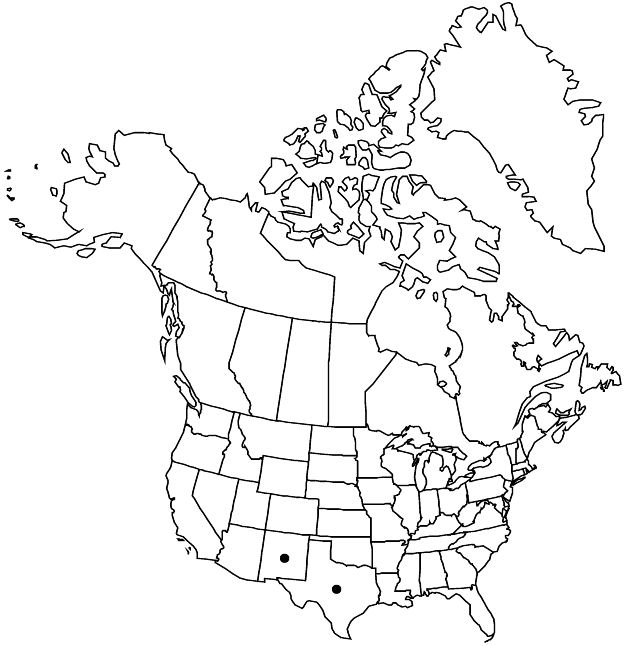Difference between revisions of "Euphorbia strictior"
Contr. U.S. Natl. Herb. 1: 214, plate 18. 1892.
FNA>Volume Importer |
imported>Volume Importer |
||
| (One intermediate revision by the same user not shown) | |||
| Line 51: | Line 51: | ||
|publication year=1892 | |publication year=1892 | ||
|special status=Endemic | |special status=Endemic | ||
| − | |source xml=https:// | + | |source xml=https://bitbucket.org/aafc-mbb/fna-data-curation/src/2e0870ddd59836b60bcf96646a41e87ea5a5943a/coarse_grained_fna_xml/V12/V12_41.xml |
|genus=Euphorbia | |genus=Euphorbia | ||
|section=Euphorbia sect. Alectoroctonum | |section=Euphorbia sect. Alectoroctonum | ||
Latest revision as of 19:15, 5 November 2020
Herbs, perennial, with cylindric rootstock. Stems erect, branched, densely clumped, previous year’s dead stems often persistent, 30–70 cm, glabrous. Leaves alternate, persisting, spreading or ascending; stipules to 0.1 mm; petiole absent; blade linear to narrowly oblanceolate, (20–)40–70 × (2–)4–5 mm, base narrowly cuneate, margins entire, apex broadly acute, surfaces glabrous; venation obscure, only midvein conspicuous on wider leaves. Cyathia in terminal dichasia; peduncle (2–)4–12(–18) mm proximal and mid peduncles and cyathia abscising early, sparsely to moderately strigose to sericeous. Involucre campanulate or hemispheric, 1.2–2.4 × 2.2–3.2 mm, pilose; glands 5, green, broadly elliptic, 0.7–0.8 × 1.3–1.6 mm; appendages white, forming narrow rim around distal margin of gland, 0.2 × 1.5–1.8 mm, entire or erose. Staminate flowers 20–25. Pistillate flowers: ovary strigillose to tomentulose; styles 0.4–0.6 mm, 2-fid at apex. Capsules globose, all 3 locules fertile, 3.2–4.5 × 4–6.5 mm, sparsely strigillose; columella 2.5–3.9 mm. Seeds gray-green to gray-brown, ovoid, 3.8 × 3 mm, shallowly and obscurely pitted; caruncle absent.
Phenology: Flowering and fruiting spring–fall.
Habitat: Open grasslands and uplands.
Elevation: 900–1400 m.
Discussion
Euphorbia strictior is confined to a small area of the Texas Panhandle and adjacent New Mexico. The species is closely related to E. aaron-rossii and E. wrightii; it can be distinguished from E. wrightii by its larger stature, shorter and less petaloid involucral gland appendages, and early abscising proximal and mid cyathia and peduncles. Euphorbia strictior also tends to develop all three seeds in the capsule, whereas E. wrightii tends to develop only two.
Selected References
None.
